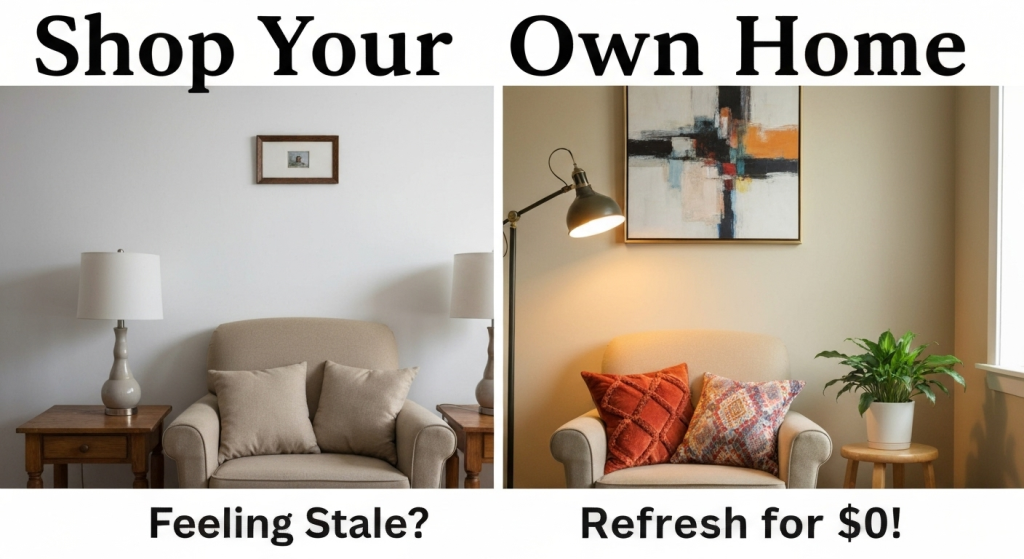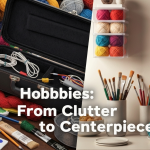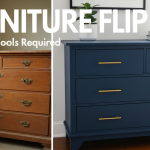Feeling that itch for a change? You look around your living room and it just feels… stale. The same layout, the same throw pillows, the same lamp in the corner. Your first thought might be to browse online stores, but your budget quickly brings that daydream to a halt. The good news is, the most amazing and budget-friendly home decor store is one you already own. Learning how to ‘shop your own home’ is the key to unlocking a fresh look without spending a single dollar. It’s a creative process that transforms your space using only the items you already have.
My name is William Johnson, and for years, my passion has been exploring the stories our homes tell. I’ve spent countless hours not just writing about home decor, but actively experimenting in my own space and helping others see the hidden potential in theirs. This isn’t about following rigid design rules or having a massive budget. It’s about developing an eye for what you already possess and learning to rearrange the puzzle pieces to create a picture that feels new and exciting. My approach is simple: a beautiful home is a personal one, built with creativity, not just a credit card.
The ‘Shop Your Own Home’ Mindset: Seeing Your Stuff with Fresh Eyes
Before you move a single thing, the most important step is a mental one. You have to break the invisible rules you’ve set for your belongings. Who says the armchair has to live in that corner? Why must that lamp stay on that specific end table? For the past five years, I’ve seen that the biggest barrier to a room refresh isn’t a lack of nice things; it’s a lack of imagination. We get so used to seeing our items in one place that we forget they can have a life elsewhere.
Let’s break it down. The core idea is to see your home not as a collection of fixed rooms, but as one big inventory of possibilities. That dresser from your bedroom might make an amazing credenza in the dining room. The rug from your home office could bring the perfect pop of color to your guest room. This process is about being a creative director, not just a homeowner. It forces you to re-evaluate what you own and why you own it. The first, non-negotiable step in this journey? A gentle declutter. You can’t see the beautiful trees if the forest is overgrown. Clear the surfaces and floors to truly see what you have to work with.
Step 1: The Great Inventory – What Do You Actually Own?

Now for the fun part: going shopping. Arm yourself with your phone’s camera and a notepad, and start walking through your home room by room. Your mission is to identify every underused, forgotten, or movable decorative item. Don’t just glance; really look. Open cabinets, check the top shelves of bookcases, and peek into the guest room that you rarely use. You are hunting for hidden gems.
Create Your ‘Shopping’ Catalog
As you walk, categorize what you find. This helps you see your collection as a whole, rather than as “living room stuff” and “bedroom stuff.” Your catalog might look something like this:
- Textiles: Throw pillows, blankets, curtains, area rugs, tablecloths, even pretty scarves you never wear.
- Lighting: Table lamps, floor lamps, and even extra lampshades. Sometimes just swapping a shade can change everything.
- Art & Decor: Framed prints, mirrors, vases, decorative bowls, sculptures, candlesticks, and photo frames.
- Small Furniture: End tables, nightstands, small accent chairs, stools, ottomans, and plant stands.
- Plants & Greenery: Don’t forget your houseplants! Moving them can liven up a new corner.
I once found a set of three small ceramic vases I’d bought on a trip years ago, tucked away in a kitchen cabinet. I had completely forgotten about them. By bringing them into the living room and placing them on the mantel, they instantly became a meaningful focal point that told a story.
The ‘Possibility Pile’
As you collect these items, create a central staging area. This could be your dining table or a clear spot on the floor. I call this the “possibility pile.” Gathering everything in one neutral space does two things. First, it frees the items from their old context. That lamp no longer “belongs” to the bedroom; it’s just a lamp, full of potential. Second, it allows you to see how different items look together. You might notice that the color of a vase perfectly picks up a subtle hue in a throw pillow you’ve had for years. This is where the magic begins.
Step 2: Start with a Blank Canvas – Resetting the Room
To truly create a fresh look, you need to erase the old one. If you’re refreshing your living room, for example, commit to clearing it out as much as is practical. Take down all the art from the walls. Remove all the decorative objects from the mantel, coffee table, and shelves. Take out the lamps, the rug, and the throw pillows. You don’t have to move the giant sofa, but clearing out the smaller, movable pieces is crucial.
This step can feel a little strange, even unsettling. Your room will look bare and empty. But here’s the thing: this is the only way to see the space itself—its light, its architectural features, and its true proportions. When you work in a cluttered or semi-arranged room, you tend to make small, timid changes. You just tweak the old layout. When you start with a blank canvas, you give yourself permission to think bigger and create a completely new arrangement from the ground up. It’s a powerful psychological trick that shifts you from a “homeowner” to a “designer” mindset.
Step 3: The Art of the Swap – Strategic Redeployment
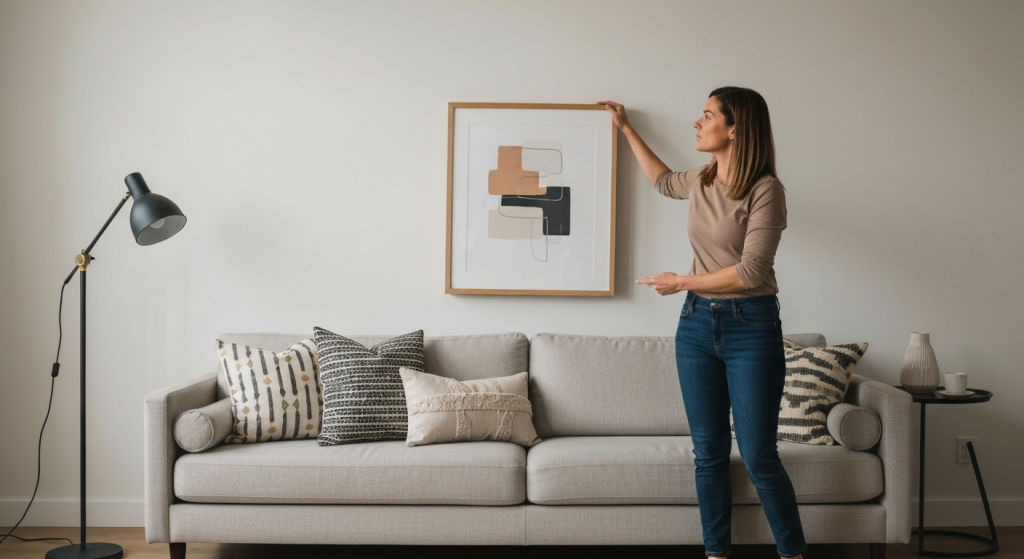
With your room cleared and your “possibility pile” ready, it’s time to start redesigning. This is a process of trial and error. Some ideas will work beautifully, and others will fall flat. That’s okay! Since you haven’t spent any money, there’s no pressure. Have fun with it and trust your gut.
Rethinking Your Textiles
Textiles are one of the fastest ways to change the mood of a room. They add color, pattern, and texture. Look at your pile of pillows, throws, and rugs with your target room in mind.
- Pillows & Throws: Gather all the throw pillows from every room in your house. Now, “shop” from this collection for your living room sofa. You can create a whole new color scheme by grouping pillows that were once scattered across different beds and chairs. Try pairing the velvet pillows from your bedroom with the patterned ones from the family room for a more eclectic, layered look.
- Rugs: This is a bigger move, but it has a huge impact. The formal, low-pile rug in your rarely-used dining room might be perfect for adding a touch of elegance to your home office. Similarly, the cozy, high-pile rug from your bedroom could make your living room feel much warmer and more inviting, especially in colder months.
Here’s a look at how simple textile swaps can dramatically alter a room’s atmosphere.
| Item Swap | Original Placement | New Placement | The Resulting Vibe |
| Area Rug | Patterned flatweave rug in the home office. | In the kitchen, under the breakfast table. | Adds personality and warmth to an often sterile space. |
| Throw Pillows | Mismatched pillows on the living room sofa. | Grouped by color on the master bed. | Creates a cohesive, hotel-chic, and luxurious feel. |
| Curtains | Sheer white curtains in the living room. | Swapped with heavier linen curtains from the bedroom. | Gives the living room a cozier, more private, and textured look. |
The Power of Light: Relocating Lamps
Lighting dictates mood. You likely have a mix of task lighting (like a reading lamp) and ambient lighting (a lamp that casts a soft glow). Moving these around can redefine how you use a space. That sleek, modern floor lamp that’s been awkwardly stuck behind your sofa might be the perfect statement piece next to a lonely armchair, creating an instant reading nook.
Don’t forget about the shades. I once had two table lamps with perfectly good bases but boring, generic shades. I realized the shade from a lamp in my guest room was a much better fit for the lamp on my living room console table. The swap took 30 seconds, cost nothing, and made both lamps look like entirely new, more intentional pieces.
A New Perspective: Moving Artwork and Mirrors
We often hang art and then never touch it again. But moving your art is a powerful way to change a room’s focal point and story.
- Create a Gallery Wall: Do you have a collection of smaller framed pieces scattered throughout your home? A family photo here, a small print there. Gather them all. You probably have enough to create a beautiful, meaningful gallery wall along a staircase or in your entryway.
- The Big Statement: Take the largest piece of art you own and try it in a new location. A large canvas that was dominating a small hallway might look incredible as the main feature above your sofa.
- Mirror, Mirror: Mirrors are magic. They bounce light around and can make a small space feel much larger. The decorative mirror hanging in your entryway could be just what your dining room needs to feel brighter and more open. Try placing a mirror opposite a window to maximize natural light.
Furniture with a New Job: Repurposing Small Pieces
This is where you can make some truly transformative changes. Small furniture is often more versatile than we give it credit for. Before you start, think about function. What does the room need? A place to set a drink? A spot for a plant? A surface for a lamp?
Here are a few ideas I’ve used in my own home and seen work beautifully for others:
- The Side Table Shuffle: Your bedroom nightstands don’t have to be a matching set. Try swapping one of them with a small end table from the living room.
- The Chair Audition: That cute accent chair in the corner of your bedroom that just collects clothes? Try it in the living room. Or use a sturdy dining chair as a stylish spot for a plant in a sunny corner.
- New Life for Benches and Stools: A small bench from the foot of a bed can work wonderfully as a narrow coffee table or as seating in an entryway. A simple stool can become a perfect side table or a stand for a stack of books.
Step 4: The Finishing Touches – Styling Your ‘New’ Items
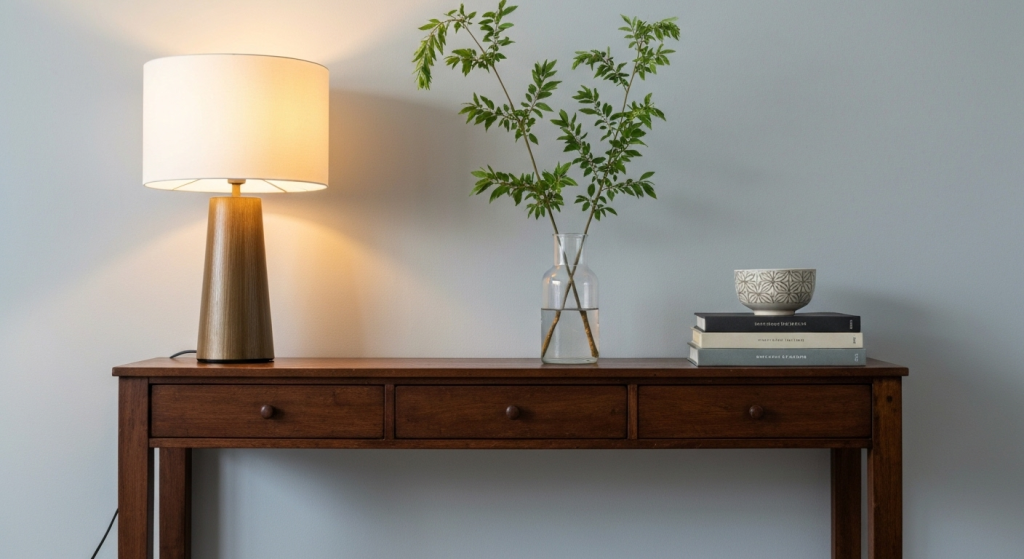
Once the big pieces are in their new homes, it’s time to style. This is how you make the new arrangement feel cohesive and intentional. Don’t just place things; arrange them with purpose.
The Rule of Three
This is a classic designer’s trick for a reason: it works. When styling surfaces like a coffee table, bookshelf, or mantel, group objects in odd numbers, particularly threes. A stack of three books, a vase, and a small decorative object look more visually appealing and balanced than two or four items. Vary the height and texture of the items in your grouping for maximum interest.
Shop Your Kitchen and Garden
Expand your definition of “home” to include every part of it. Your kitchen is a treasure trove of decor.
- Use a beautiful ceramic pitcher as a vase for flowers or greenery.
- Group a collection of wooden cutting boards against your backsplash for a rustic, warm touch.
- A pretty bowl can be a great catch-all for keys and mail on an entryway table.
And don’t forget the ultimate free decor: nature. Step outside and clip a few branches from a tree or some leafy stems from a bush. Placed in a simple vase or jar, they bring life, texture, and a sculptural element to any room. It’s an instant, organic refresh.
Troubleshooting Common Challenges
Shopping your home is a creative process, and sometimes you hit a snag. Here are a few common problems and how to navigate them.
- “My color schemes are totally different.” You’d be surprised how many items can cross over. Look for pieces in neutral colors—wood tones, metallics, glass, and neutral fabrics like cream, gray, or white. You can also look for items that share a subtle accent color. That one blue book on your shelf might perfectly match the tiny bit of blue in your living room rug.
- “Nothing seems to fit right.” This is part of the process! Not every idea will be a winner. If moving the armchair just makes the room feel cramped, move it back. The goal is to experiment. Sometimes the process of trying new things and ruling them out makes you appreciate your original layout even more, but with a few new tweaks.
- “It just looks like I moved my old stuff around.” This is where styling comes in. It’s not just about swapping; it’s about creating new vignettes. Instead of just placing the lamp on the table, add a stack of books and a small plant to create a purposeful arrangement. The key is to make it look intentional, not random.
Frequently Asked Questions
How often can I ‘shop my home’?
As often as you like! A small refresh, like swapping out coffee table decor or changing throw pillows, can be done monthly or whenever you feel the need for a change. A bigger furniture rearrangement might be something you do seasonally or once a year.
What’s the most impactful item to move for a big change?
An area rug. Changing the rug completely alters the color scheme, texture, and overall foundation of a room’s design. After that, moving a large piece of art or a significant light fixture makes the next biggest impact.
Does this work for very small apartments?
Absolutely! In fact, it can be even more effective in small spaces. Repurposing furniture (like using a stool as both seating and a side table) is key to maximizing function in a small footprint. Moving a mirror can also be a game-changer for making a small room feel larger.
What if I declutter and find I have nothing good to use?
This process is also a great diagnostic tool. If you go through your home and genuinely find that you don’t love any of your decor, that’s valuable information. It helps you create a very intentional shopping list for the future, so when you do have a budget, you’ll buy things you truly love instead of just filling space.
Your Home’s Hidden Potential
Shopping your own home is more than just a free decorating trick. It’s a sustainable practice that encourages you to appreciate what you already have. It pushes you to be more creative and to develop a deeper connection with your space. You’ll learn what you truly love and what you’re just holding onto out of habit.
So, the next time you feel that familiar boredom with your surroundings, resist the urge to immediately browse online. Instead, take a slow walk through your own home. Look at your belongings with fresh eyes and an open mind. The perfect item to revitalize your living room might just be hiding in plain sight in your bedroom. Your next favorite room is waiting to be discovered, and the key is already in your hands.
